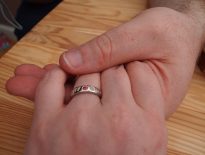
I just want to know. Who got all the jewelry? – Joan Rivers
Jewelry plays a huge role in our everyday lives from wedding rings to priceless memories of a loved one, and as status symbols to completing an outfit. The abundance of jewelry is incorporated so deeply into human culture that it’s almost as if it’s innate of our species. No other creature naturally adorns themselves with “jewelry.” Humans do so purposefully and for a multitude of reasons. Let’s look into the origins of jewelry and how it plays a role in societies across the globe.
Ancient Jewelry
The origin of the word jewelry comes from the Latin, jocale, which means “plaything.” As soon as humans began to use tools and wear clothes, jewelry came into play using a variety of materials available. Archaeologists discovered primitive types of jewelry in the forms of obsidian, wood, animal skins, stones, plants, bones, feathers, and shells. The earliest form of jewelry found originated from Kenya, Africa where perforated snail shells made into beads were found at Blombos Cave dating to 75,000 years ago and perforated ostrich eggs made into beads were found at Enkapune Ya Muto over 40,000 years ago. These beads were the earliest form of playthings for humans to affix to clothing, hair, or stringed together into a necklace or bracelet.
Ancient Cultures that Paved the Way in Jewelry Technology
Aside from the jewelry found in Africa, the three ancient nations that show the most innovation in jewelry development are Egypt and Mesopotamia, India, and China. Thank Egypt and Mesopotamia for their advances in metallurgy as it lead to glass manufacturing, which is clearly widespread throughout the world for function and design. Aside from that, they are also known for their abilities in gem collecting.
India mastered gold gathering and processing instead, allowing them to advance in crafting jewelry as an art more quickly. The deep rooted history that Indians have with gold and jewelry helped in the integration of these things into their religions and everyday life. Looking at the traditional outfits of India, one can see how elaborate and decorated they can be. Even with the Taj Mahal, it is elaborately adorned with gems. The Taj Mahal began construction in 1631 when Emperor Shah Jahan promised his beloved wife a mausoleum more beautiful than any in the world as she died during labor. Today, it is one of the Seven Wonders of the World.
China plowed full force in jewelry advancements, which inspired their unique style across the continent. To this day, much of Chinese jewelry is designed with a focus on animals, Chinese dragons and phoenixes, and nature. Jade is the most popular form of gemstones used and much symbolism is attributed to the jewelry made from it.
Symbolism of Jewelry
Jewelry quickly meant more than a plaything to ancient cultures. It began as a way to adorn the body but in time became ways to express themselves in various ways. Across the world, jewelry established the status of the wearer. It could show how wealthy they were and they could trade jewelry for goods. Many politicians wore unique headdresses or large necklaces to showcase their achievements and power.
Jewelry could also mean the love one had towards another as a gift. Religious communities crafted jewelry as symbolic of their membership within certain affiliations. The crucifix and Star of David are more notably seen during modern day. However, they were also used as forms of protection to ward off evil in the form of amulets and rings. This constant integration of jewelry into daily lives encouraged many to search for better materials and craft more esthetically pleasing pieces throughout the years.
Functionality of Jewelry
Aside from being visually symbolic, jewelry became a functional part of everyday life. Dowries were given in the form of jewels to families in exchange for marrying their daughters. People used it for more than just a form of currency. Jewelry could be made to store other things in the form of lockets, chests, etc. On the body, humans created hair pins, buckles for shoes and belts, and clasps. Jewelry technology aided in the advancement of engineering for many cultures. We find many coins and jewels from Ancient Rome and they gracefully engineered things like aqueducts and watermills to extract metal ores.
Modern Day Jewelry
Today, jewelry is much more accessible and symbolic in nature to the average person. Many associate jewelry with fashion statements. Jewelry is passed on from family member to family member. Wedding rings are given as symbols of love and commitment. The integration of jewelry in ancient times is still prevalent to us today and will, no doubt, continue to do so wherever the future takes us.
The author of this article is Erin Tran. If you enjoyed this piece you can follow me on Twitter @CustParadigm. When I’m not browsing the Boulder jewelry racks, I can be seen driving into the mountains for a day hike with my dog.





